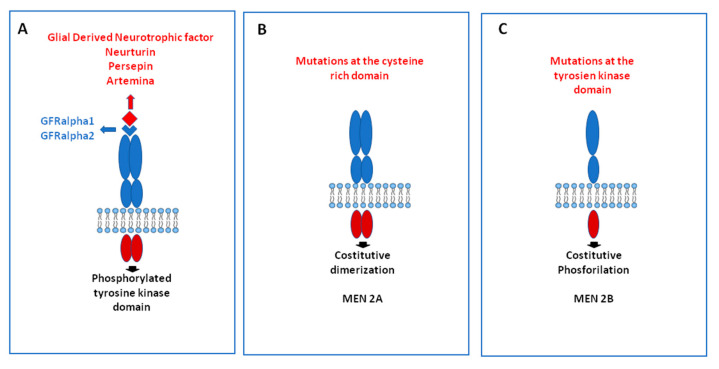Figure 6.
Mechanisms of activation of the RET gene: in physiological conditions, the binding of a RET ligand, which is mediated by a co-receptor, induces the dimerization of two to RET molecules, causing the phosphorylation of the tyrosine kinase domain (A). When a point mutation in the cysteine domain is present, as it happens in multiple endocrine neoplasia (MEN) type 2A syndrome, the constitutive dimerization of 2 RET molecules occurs, and the receptor is activated independently by ligand-binding (B). Alternatively, if the mutation occurs in the tyrosine kinase domain, as it happens in MEN 2B syndrome, constitutive phosphorylation activates the RET receptor independently by ligand-binding (C).

